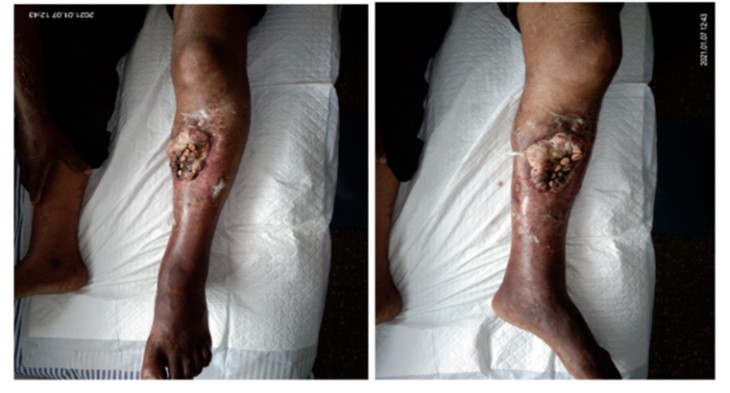


Journal of Clinical and Biomedical Sciences
DOI: 10.58739/jcbs/v14i2.24.27
Year: 2024, Volume: 14, Issue: 2, Pages: 59-61
Case Report
Anil Kumar P1, Nagakumar J S2,∗
1 Assistant Professor, Department of Orthopaedics, R L Jalappa Hospital, Tamaka, Kolar, Karnataka, India
2 Professor and Unit Head, Department of Orthopaedics, R L Jalappa Hospital, Tamaka, Kolar, Karnataka, India
*Corresponding author email: [email protected]
Received Date:02 April 2024, Accepted Date:07 June 2024, Published Date:24 July 2024
Osteomyelitis is an infection with progressive destruction of bone tissue involving the bone and articular cartilage with its medullary canal. Chronic osteo-myelitis treatment is challenge for the orthopaedician. The bone microscopic anatomy and also the microorganism biofilms and their ability to adapt to their surrounding environment. It’s tough for the antibiotics and disinfectants to breach the biofilm barrier and kill these microorganism colonies.
Cutaneous neoplasm are a rare complication developing after a chronic bone infection. The incidence and prevalence of these cutaneous tumor/neoplasm following chronic bone infection continues to increase despite the increasing awareness to the disease process, and medical advances in early diagnosis and early treatment. Most common neoplasm after a chronic bone infection are squamous cell carcinoma and rarely sarcoma or lymphoma. 1
In our study we report adenosquamous cell carcinoma arising from chronic osteomyelitis of tibia for which above knee amputation was done.
This is an open-access article distributed under the terms of the Creative Commons Attribution License, which permits unrestricted use, distribution, and reproduction in any medium, provided the original author and source are credited.
Published By Sri Devaraj Urs Academy of Higher Education, Kolar, Karnataka
Subscribe now for latest articles and news.